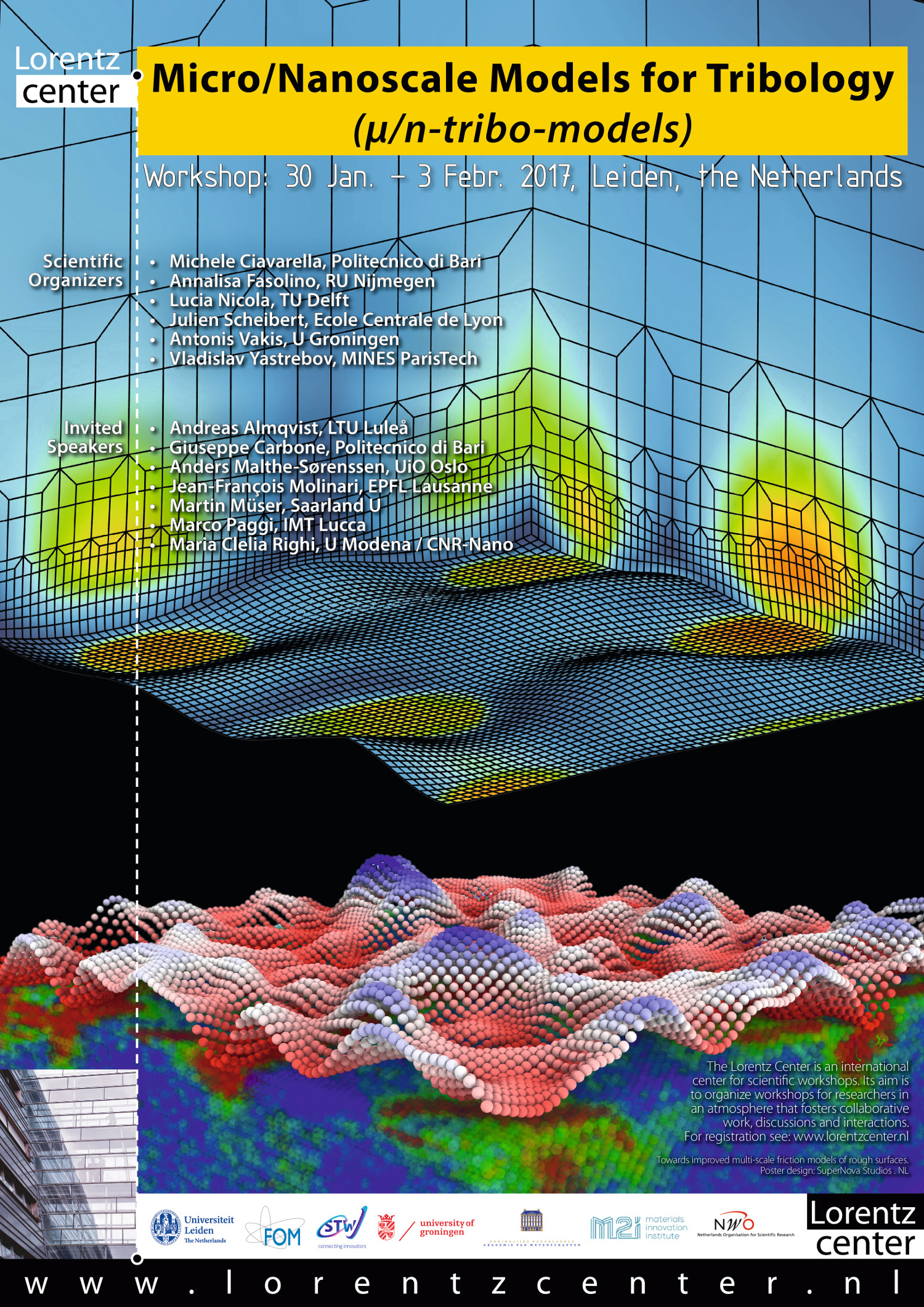|
|
|
Main menu
HELP
|
Welcome Dear visitor! Welcome to the web-page dedicated to the Workshop "Micro/Nanoscale Models for Tribology" which was held in Lorentz Centre from January 30 to February 3, 2017 in Leiden. This web-page summarizes main outputs of the workshop (plenary lectures, round table dicussions) in order to provide you with an archival reference. Workshop descriptionTribological research at micro- and nanoscales is important for many cutting-edge engineering applications. However, the lack of cross-disciplinary communication within the experimental, theoretical and computational tribology communities has been an obstacle in answering fundamental questions about contact, friction and adhesion. Significant division lines can be found in the way we currently characterize surface roughness, as well as the methods by which we incorporate effects such as adhesion and plasticity in our analytical and computational models. Very often, our assumptions on these aspects severely limit the applicability of our models, their correspondence to realistic physical phenomena and their agreement with experimental results. Yet, even models that have received significant criticism are still in widespread use, suggesting that they are practically useful despite their (perceived) limitations. The proposed workshop aims to provide a forum for open discussion on these and other issues of critical importance to tribologists, both in academia and in industry, and beyond. In addition to fundamental understanding, successfully accounting for the effects of roughness, material and mechanical properties in our models will enable the design of surfaces and interfaces with entirely new properties, beyond the already explored self-cleaning or anti-fouling capabilities. Objectives
Review paperPlenary talks, round tables and general discussions permitted to write a rather complete review paper "Modeling and simulation in tribology across scales: An overview", which appeared in Tribology International, vol. 125, pp. 169-199 (2018), doi: 10.1016/j.triboint.2018.02.005 AbstractThis review summarizes recent advances in the area of tribology based on the outcome of a Lorentz Center workshop surveying various physical, chemical and mechanical phenomena across scales. Among the main themes discussed were those of rough surface representations, the breakdown of continuum theories at the nano- and microscales, as well as multiscale and multiphysics aspects for analytical and computational models relevant to applications spanning a variety of sectors, from automotive to biotribology and nanotechnology. Significant effort is still required to account for complementary nonlinear effects of plasticity, adhesion, friction, wear, lubrication and surface chemistry in tribological models. For each topic, we propose some research directions.
Poster
PhotosAll photos taken by V. Yastrebov during the workshop are available in Gallery and also on photos.google. |




